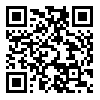Volume 1, Issue 4 (8-2017)
Iranian Journal of Educational Sociology 2017, 1(4): 197-206 |
Back to browse issues page
Download citation:
BibTeX | RIS | EndNote | Medlars | ProCite | Reference Manager | RefWorks
Send citation to:



BibTeX | RIS | EndNote | Medlars | ProCite | Reference Manager | RefWorks
Send citation to:
Motamed H, Yarmohammadian M, yousefi A. (2017). Investigating the attitude of educational managers toward Pluralistic Curriculum. Iranian Journal of Educational Sociology. 1(4), 197-206.
URL: http://iase-idje.ir/article-1-471-en.html
URL: http://iase-idje.ir/article-1-471-en.html
1- Ph.D. Student of Curriculum Planning at Islamic Azad University, Khorasgan Branch, Isfahan, Iran
2- Professor of Islamic Azad University, Khorasgan Branch, Isfahan, Iran.
3- Associate Professor, Islamic Azad University, Khorasgan Branch, Isfahan, Iran.
2- Professor of Islamic Azad University, Khorasgan Branch, Isfahan, Iran.
3- Associate Professor, Islamic Azad University, Khorasgan Branch, Isfahan, Iran.
Abstract: (1693 Views)
Introduction: The main purpose of this research is investigating the attitude of educational managers toward Pluralistic Curriculum.
Methodology: To achieve this goal, the research method combined with the exploratory approach is used. The research method was the grand theory in the qualitative section, and survey in the quantitative part. Based on purposeful sampling, 30 school principals who were expert in this area, selected and were interviewed using the in-depth interview method. The interview continued until the theoretical saturation point. In the quantitative part, according to the results obtained from the previous studies the target group interviews, a questionnaire prepared by the researcher and used. In the qualitative section, the acquisition of credibility, through believability, transferability and verifiability were achieved. In the coding processes to increase the trust two encoders were used. Three types of open, axial and selective coding were used in the method of data analysis in the qualitative section. The factor analysis and Friedman test were also used in the quantitative part.
Findings: The result of the research revealed that from the viewpoint of educational managers, the pluralistic curriculum has five components, including racial and ethnic inequality, linguistic diversity, gender inequality, social inequality, and religious diversity.
Conclusion: The dimensions of the pluralistic curriculum in comparison with the existing situation that, consisting of two components including racial and ethnic inequality and gender inequality, has five components, including racial and ethnic inequality, linguistic plurality, gender inequality, social inequality, and the Religious diversity.
Methodology: To achieve this goal, the research method combined with the exploratory approach is used. The research method was the grand theory in the qualitative section, and survey in the quantitative part. Based on purposeful sampling, 30 school principals who were expert in this area, selected and were interviewed using the in-depth interview method. The interview continued until the theoretical saturation point. In the quantitative part, according to the results obtained from the previous studies the target group interviews, a questionnaire prepared by the researcher and used. In the qualitative section, the acquisition of credibility, through believability, transferability and verifiability were achieved. In the coding processes to increase the trust two encoders were used. Three types of open, axial and selective coding were used in the method of data analysis in the qualitative section. The factor analysis and Friedman test were also used in the quantitative part.
Findings: The result of the research revealed that from the viewpoint of educational managers, the pluralistic curriculum has five components, including racial and ethnic inequality, linguistic diversity, gender inequality, social inequality, and religious diversity.
Conclusion: The dimensions of the pluralistic curriculum in comparison with the existing situation that, consisting of two components including racial and ethnic inequality and gender inequality, has five components, including racial and ethnic inequality, linguistic plurality, gender inequality, social inequality, and the Religious diversity.
Type of Study: Research Article |
Subject:
Special
Received: 2019/07/6 | Accepted: 2019/07/6 | Published: 2019/07/6
Received: 2019/07/6 | Accepted: 2019/07/6 | Published: 2019/07/6
Send email to the article author
| Rights and permissions | |
 |
This work is licensed under a Creative Commons Attribution-NonCommercial 4.0 International License. |






.jpg)
